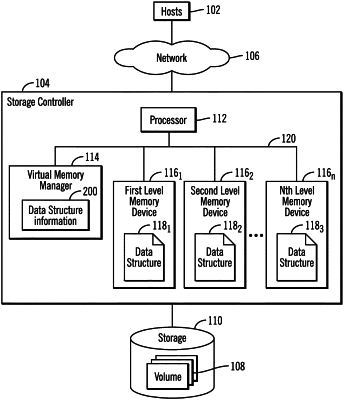| CPC G06F 3/0616 (2013.01) [G06F 3/065 (2013.01); G06F 3/0653 (2013.01); G06F 3/0679 (2013.01); G06F 12/08 (2013.01); G06F 2212/1036 (2013.01); G06F 2212/2022 (2013.01)] | 12 Claims |

|
1. A computer program product for managing data in a plurality of memory devices, the computer program product comprising a computer readable storage medium having computer readable program code embodied therein that when executed performs operations, the operations comprising:
generating, during system initialization, data structure information indicating that system data structures, generated during system initialization, are one of swappable data structures and non-swappable data structures based on estimated frequencies the system data structures will be accessed, wherein the non-swappable data structures are estimated to be more frequently accessed than the swappable data structures, wherein the non-swappable data structures are maintained in a first level memory device and not moved to a second level memory device, wherein the first level memory device has lower latency than the second level memory device, wherein the system data structures are identified as having a file name or object name and comprise configuration information generated by an operating system;
maintaining access counts for the swappable data structures stored in the first level memory device;
selecting a swappable data structure in the first level memory device having lowest of the access counts of the swappable data structures in the first level memory device;
removing the selected swappable data structure from the first level memory device; and
retaining the selected swappable data structure in the second level memory device.
|